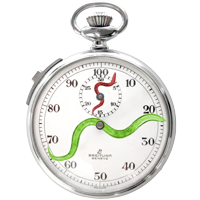 |
The C. elegans Lifespan
|
The Lifespan Machine is an automated imaging platform that combines modified flatbed scanners with custom image processing and data validation software. The technology automates the collection of high-accuracy, large-population, nematode survival data. It has been used for a variety of purposes, including studying the effect of genes, diets, drugs and environmental factors on lifespan, stress resistance, and pathogen resistance.
Our 2013 methods paper is a good starting point for those interested in learning about the method. Our mailing list is a good forum for asking questions. You might also try emailing Nick
It’s important to note that no amount of hardware and software can replace the attention of a thoughtful experimenter. Just as in manual survival assays, the conclusions drawn from automated assays should be evaluated critically in the context of the many assumptions made during collection and analysis.
The MethodA good introduction to the technique is available in the first methods paper: Nicholas Stroustrup, Bryne E Ulmschneider, Zachary M Nash, Isaac F López-Moyado, Javier Apfeld, Walter Fontana. The C. elegans Lifespan Machine. Nature Methods 2013 10 665–670 (2013) [website] The Lifespan Machine 2.0 was released in 2021, and includes a set of new “health-span” metrics that quantify behavior along with lifespan. The update also contains numerous bug fixes, performance improvements, and in particular an adaptation of the software to run on high-performance computing clusters as well as stand-alone PCs. It is described in the preprint: Natasha Oswal, Olivier M.F. Martin, Sofia Stroustrup, Monika Anna Matusiak Bruckner, Nicholas Stroustrup. A Hierarchical Process Model Links Behavioral Aging and Lifespan in C. elegans. Bioarxiv 2021 [website] The Caenorhabditis Intervention Testing Program (CITP) has also developed a set of hardware alterations that they found useful [website]. Source Code:Source code is available from our github repository. The lifespan machine v1 source is preserved on the “main” branch whereas the actively-developed v2 source is located on the “flow” branch. We have assembled a software installation guide that outlines the steps required to set up the Linux server require to control scanners. We have assembled a software tutorial outlining the basic steps required to perform automated image analysis. Select Publications using the Lifespan MachineThis incomplete list highlights the various applications of the lifespan machine. Sen, Ilke, et al. DAF-16/FOXO requires Protein Phosphatase 4 to initiate transcription of stress resistance and longevity promoting genes. Nature communications 11.1 (2020): 1-17. Schiffer, Jodie A., et al. Caenorhabditis elegans processes sensory information to choose between freeloading and self-defense strategies. Elife 9 (2020): e56186. Bazopoulou, Daphne, et al. Developmental ROS individualizes organismal stress resistance and lifespan. Nature 576.7786 (2019): 301-305. Guerrero-Rubio, M. Alejandra, et al. Extension of life-span using a RNAi model and in vivo antioxidant effect of Opuntia fruit extracts and pure betalains in Caenorhabditis elegans. Food chemistry 274 (2019): 840-847. Janssens, Georges E., et al. Transcriptomics-based screening identifies pharmacological inhibition of Hsp90 as a means to defer aging. Cell reports 27.2 (2019): 467-480. Banse, Stephen A., et al. Automated lifespan determination across Caenorhabditis strains and species reveals assay-specific effects of chemical interventions. GeroScience 41.6 (2019): 945-960. Kasimatis, Katja R., Megan J. Moerdyk-Schauwecker, and Patrick C. Phillips. Auxin-mediated sterility induction system for longevity and mating studies in Caenorhabditis elegans. G3: Genes, Genomes, Genetics 8.8 (2018): 2655-2662. Lin, Xin-Xuan, et al. DAF-16/FOXO and HLH-30/TFEB function as combinatorial transcription factors to promote stress resistance and longevity. Nature communications 9.1 (2018): 1-15. Stroustrup, Nicholas, et al. The temporal scaling of Caenorhabditis elegans ageing. Nature 530.7588 (2016): 103-107 Lucanic, Mark, et al. Chemical activation of a food deprivation signal extends lifespan. Aging Cell 15.5 (2016): 832-841. McEwan, Deborah L., et al. Tribbles ortholog NIPI-3 and bZIP transcription factor CEBP-1 regulate a Caenorhabditis elegans intestinal immune surveillance pathway. BMC biology 14.1 (2016): 1-17. de Abreu, Diana Andrea Fernandes, et al. An insulin-to-insulin regulatory network orchestrates phenotypic specificity in development and physiology. PLoS Genet 10.3 (2014): e1004225. Questions We have set up a mailing list on google groups, where questions can be asked and |
A plate containing a strain of C. elegans carrying the age-1(hx546) mutation was imaged automatically for four weeks. Time-lapse videos depict the nematode’s life and death prior to analysis.
The same plate with overlated metadata portraying the results of automated analysis.